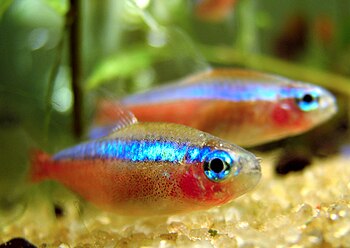 |
| Photo by maveric2003 |
The best thing about the tunnel is that you can see the underside of the creatures as they swim above you. The tanks also boast a coral and tropical fish display that will amaze anyone. The coral itself is breathtaking. In fact, this coral collection is the largest of any aquarium in the world.
Another amazing display inside the aquarium is the giant cylinder columns of jellyfish. They are several feet wide, and you can watch the jellyfish float above you. The sight of these creatures is both terrifying and mesmerizing at the same time.
Next, you move along through the aquarium to the sea turtles tanks. These sea turtles have been injured at some point in their lives and their stay at the aquarium is only a temporary one. They will be reintroduced back into their natural habitat once they have recovered. This is my favorite exhibit in the aquarium. If you happen to visit during feeding time you can actually feed the turtles. It's great to watch these huge docile creatures chomping happily on their lunch.
The ocean center also has an interactive display of whales, where visitors can learn about these giant mammals. Whale watching is a big hobby in Hawaii. There are several whale watching tours available. Turtle Bay resort located on the north shore of Oahu boasts that during the winter you can actually see whales from your balcony.
The Maui Ocean Center is a perfect place for families to visit. They offer a wide variety of exhibits for children that are both informative and exciting. There is also a touch pond, where children can pick up some of the creatures and actually handle them. They can see sea stars and sea urchins, as well as skates and rays. Be careful when stroking rays, however, you should always stroke them from head to tail in order to avoid being stung by there tails.
No kid friendly aquarium would be complete without food. The ocean center offers a café where you can grab lunch. They have light fare such as salads and sandwiches, and of course, ice cream. Also, don't miss the great picture taking opportunities that the center has to offer. Along the backside of the aquarium, there are some spectacular views of Ma'alaea Bay, and there is a dolphin statue located in the very front of the center that also makes for a great souvenir photo.





